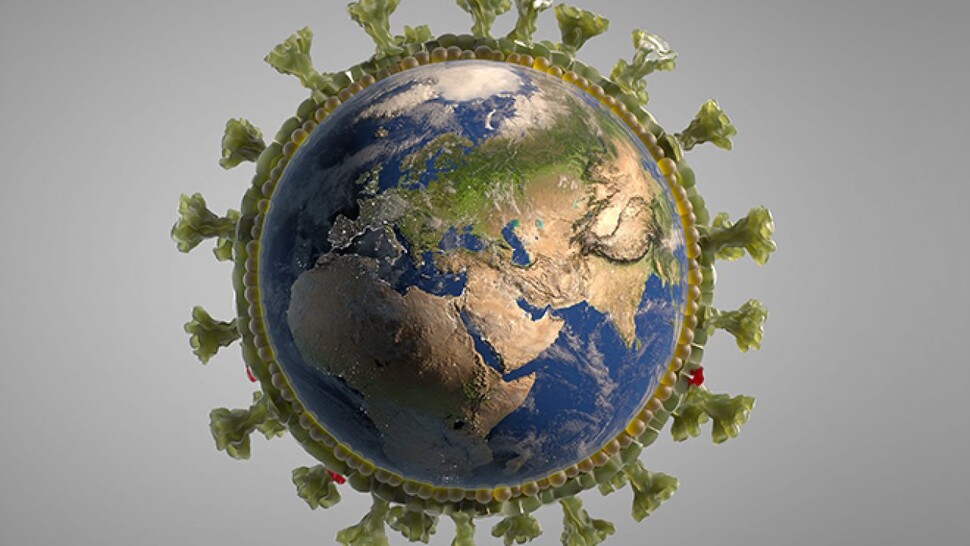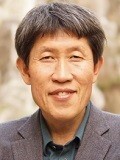hankyoreh
Links to other country sites 다른 나라 사이트 링크
[Column] S. Korea’s path in the post-America, post-corona era

So far, more than 83,000 Americans have died from COVID-19. Various analyses have already been made about why the US has seen so many fatalities since its first death occurred shortly after South Korea’s. Former President Barack Obama has slammed the Trump administration for serious problems with its response to the disease. But would the situation really have been any different if the Democrats had been in power?
It’s widely known that the US has the most advanced medical technology in the world, along with the finest doctors, researchers, and medical schools. The US also spends more money on medical care relative to gross domestic product (GDP) than any other country. Given those factors, why does the US seem to be so vulnerable to infectious disease? There are various reasons, to be sure — Trump’s slow response, the high barrier to testing, and a cultural aversion to wearing masks. But there’s no disagreement about the impact of the US’ weak public health system, including its lack of universal health insurance.
The US’ failure to control the spread of the disease likely results from the fact that its astronomical health care spending goes to line the pockets of massive interest groups — namely, pharmaceutical companies, hospitals, insurance companies, and law firms — rather than to fight infectious disease outbreaks and other crises. Another factor is that the US’ cutting-edge medical technology only benefits the wealthy people who can afford them. Perhaps that’s why the media is reporting that 70% of COVID-19 fatalities in the US have occurred among black Americans.
The failure of disease control in Western European countries that provide state-controlled medical services cannot be explained in the same way as the US. Taiwan and South Korea differ from Western Europe in the speed and transparency of the central government’s actions, the dedication of medical personnel, and the communal thinking of their citizens. Those are thought to be important factors in the successful response to the disease by the East Asian democracies, in contrast with control by the state in countries such as Vietnam.
S. Korea’s medical infrastructure is actually inferior to Western countries’The leadership of the Moon Jae-in administration, institutions such as the Korea Centers for Disease Control and Prevention (KCDC), the dedication of medical workers, and government efficiency are likely the major components of Korea’s model for successful disease control and for public-private cooperation. But in reality, Korea’s spending on public medical services is much lower than in the US, and Korea falls far behind Western European in its number of public hospitals, hospital beds, and doctors. This means that, when another infectious disease or social disaster strikes, Korea will still be beset by serious structural vulnerabilities. Furthermore, the disease control model is not very applicable to the massive employment crisis that’s just beginning, or to the energy and climate crises to come.
The vulnerabilities and blind spots revealed by COVID-19The inconvenient truth concealed by Korea’s disease control success story is that some 900 people die in industrial accidents in the country each year, including a recent warehouse fire in Icheon, Gyeonggi Province, that claimed the lives of 38 workers. Fighting a disease is not the same as treating one, and eliminating risk is not equivalent to a social safety net. The forces that are unwilling to sustain “unprofitable” parts of the public sector remain just as strong in Korea as in the US. Former Liberty Korea Party lawmaker Hong Joon-pyo, who masterminded the shutdown of the Jinju Medical Center, a public hospital, while serving as governor of South Gyeongsang Province, was returned to office by Daegu voters in the recent parliamentary elections as an independent candidate.
Despite its claim to be a “medi-city,” Daegu only has a single public hospital, Daegu Medical Center. When the number of COVID-19 cases began to surge in the city, many patients died because they weren’t able to receive treatment. South Korea’s family-controlled conglomerates, known as the chaebols, and the conservative United Future Party, have consistently advocated the commercialization of the medical industry since the presidencies of Lee Myung-bak and Park Geun-hye. The Ministry of Economy and Finance, which controls the government’s coffers, holds the same position.
As South Korean President Moon Jae-in enters the third year of his term, he has confidently declared that Korea has become a global leader. Korea certainly has the right to talk that way at the current moment. Moon also deserves credit for his determination to pave the way for providing employment insurance for the entire population and to bolster public health services by building more hospitals specializing in infectious diseases.
But before we get started on a “Korean New Deal” for the “post-coronavirus era,” we need to talk about the “post-American era” and also underline how this initiative should distinguish itself from the New Deal of the 20th century. The COVID-19 calamity has revealed the flaws of the American system and the systems of disease control and medical care in the advanced capitalist states of Western Europe, flaws that can be blamed on the excessive commercialization of medical services, insufficient democracy, collapsing social cohesion, and humanity’s plundering of the earth’s resources throughout the history of civilization.
In order for South Korea to become a true global leader, therefore, it needs to emphasize the role of the public sector and reevaluate the American medical and welfare system: the mindset that human life and safety and social sustainability are a market for the pursuit of profit, in which the state is taken captive by the corporate sector.
New Deal also needs Green New Deal blueprintIf the new industrial policy and employment safety net that Moon has proclaimed don’t contain concessions and compromise by the current economic winners and a blueprint for a Green New Deal, they will not carry historical significance as the New Deal of the 21st century. Except for the plan to expand employment insurance, it’s unclear exactly how Moon’s New Deal is different from the policy of promoting future industries that has been continually advanced by government economists, the chaebols, and the Lee and Park administrations. For his plan to be a Korean New Deal for the 21st century, it needs to include a vision for a new democracy in which ordinary people and the disenfranchised wield true sovereignty: namely, the ability to freely participate in governance.

By Kim Dong-choon, professor of NGO studies at Sungkonghoe University
Please direct comments or questions to [english@hani.co.kr]

Editorial・opinion
![[Column] Season 2 of special prosecutor probe may be coming to Korea soon [Column] Season 2 of special prosecutor probe may be coming to Korea soon](https://flexible.img.hani.co.kr/flexible/normal/500/300/imgdb/original/2024/0426/3317141030699447.jpg) [Column] Season 2 of special prosecutor probe may be coming to Korea soon
[Column] Season 2 of special prosecutor probe may be coming to Korea soon![[Column] Park Geun-hye déjà vu in Yoon Suk-yeol [Column] Park Geun-hye déjà vu in Yoon Suk-yeol](https://flexible.img.hani.co.kr/flexible/normal/500/300/imgdb/original/2024/0424/651713945113788.jpg) [Column] Park Geun-hye déjà vu in Yoon Suk-yeol
[Column] Park Geun-hye déjà vu in Yoon Suk-yeol- [Editorial] New weight of N. Korea’s nuclear threats makes dialogue all the more urgent
- [Guest essay] The real reason Korea’s new right wants to dub Rhee a founding father
- [Column] ‘Choson’: Is it time we start referring to N. Korea in its own terms?
- [Editorial] Japan’s rewriting of history with Korea has gone too far
- [Column] The president’s questionable capacity for dialogue
- [Column] Are chaebol firms just pizza pies for families to divvy up as they please?
- [Column] Has Korea, too, crossed the Rubicon on China?
- [Correspondent’s column] In Japan’s alliance with US, echoes of its past alliances with UK
Most viewed articles
- 1Is Japan about to snatch control of Line messenger from Korea’s Naver?
- 2‘We must say no’: Seoul defense chief on Korean, USFK involvement in hypothetical Taiwan crisis
- 3S. Korea “monitoring developments” after report of secret Chinese police station in Seoul
- 4The dream K-drama boyfriend stealing hearts and screens in Japan
- 5Division commander ordered troops to enter raging flood waters before Marine died, survivor says
- 6[Editorial] New weight of N. Korea’s nuclear threats makes dialogue all the more urgent
- 7No good, very bad game for Korea puts it out of Olympics for first time since 1988
- 8[Column] ‘Choson’: Is it time we start referring to N. Korea in its own terms?
- 9‘Weddingflation’ breaks the bank for Korean couples-to-be
- 10[Column] Season 2 of special prosecutor probe may be coming to Korea soon